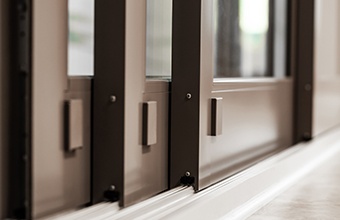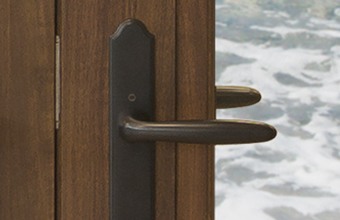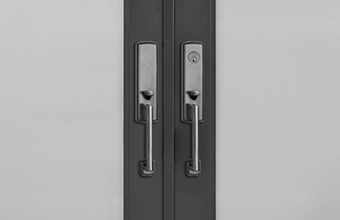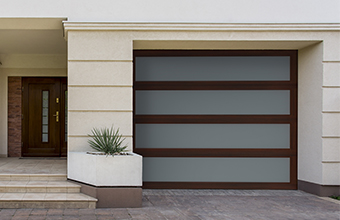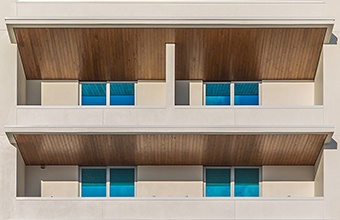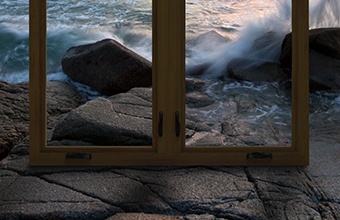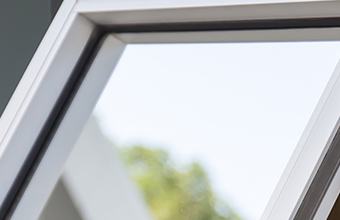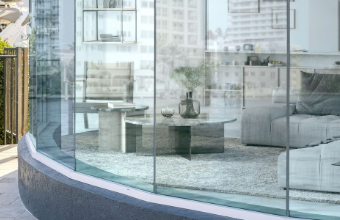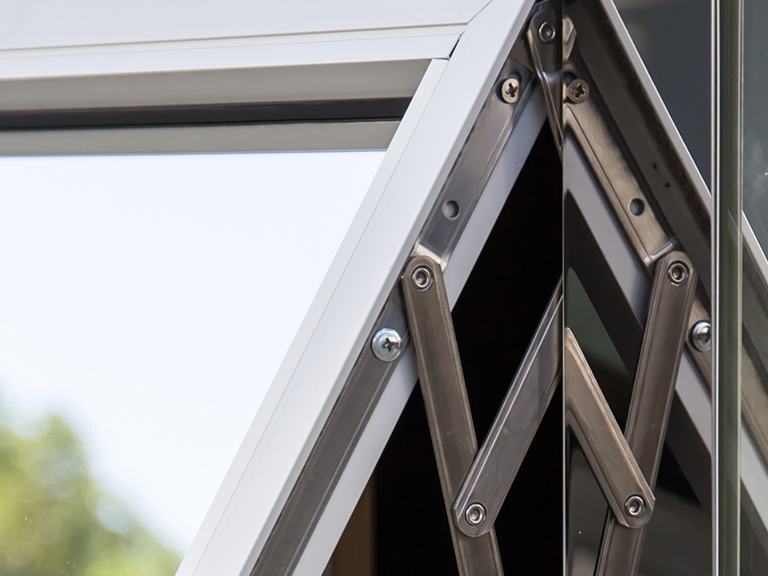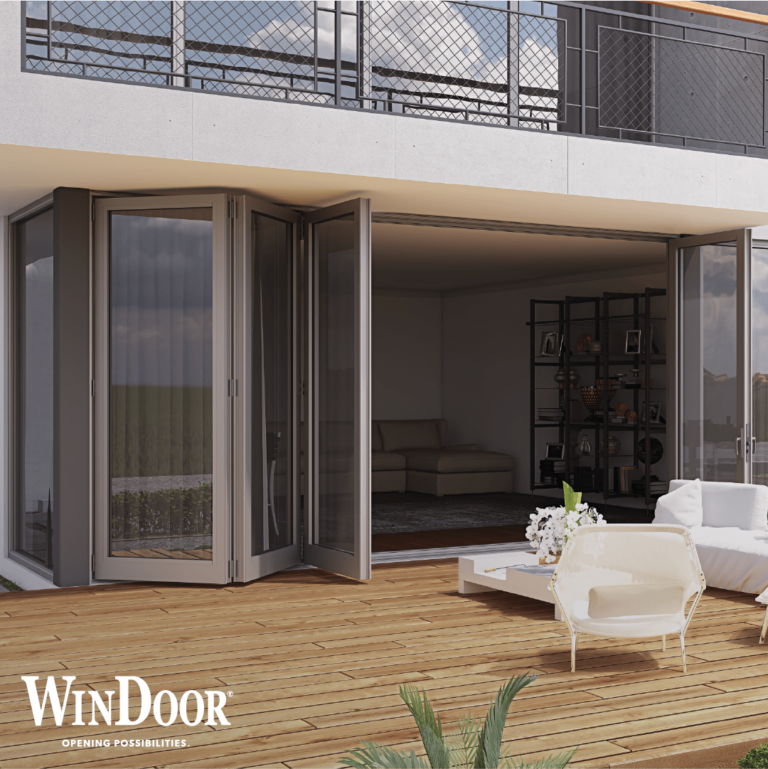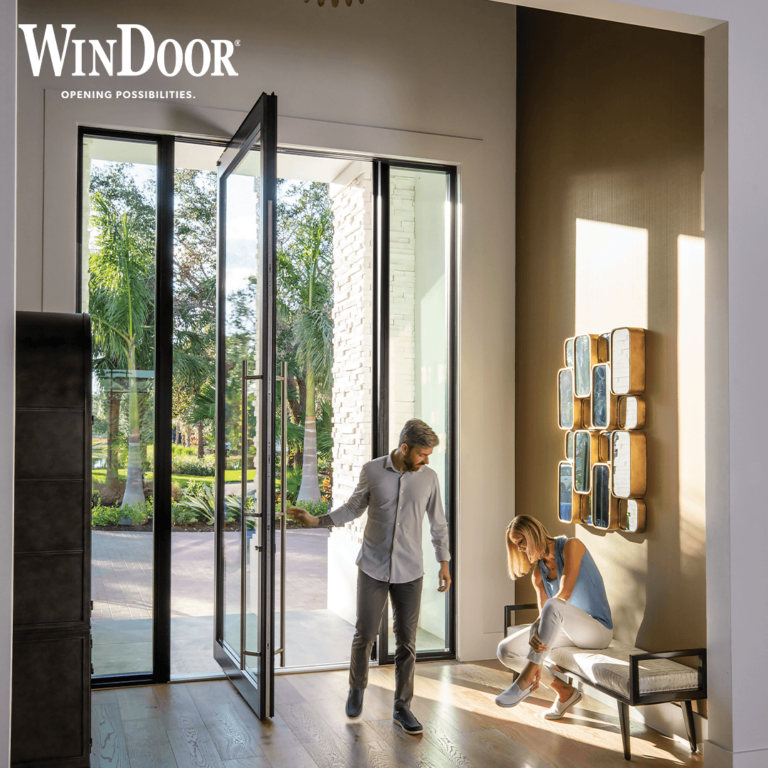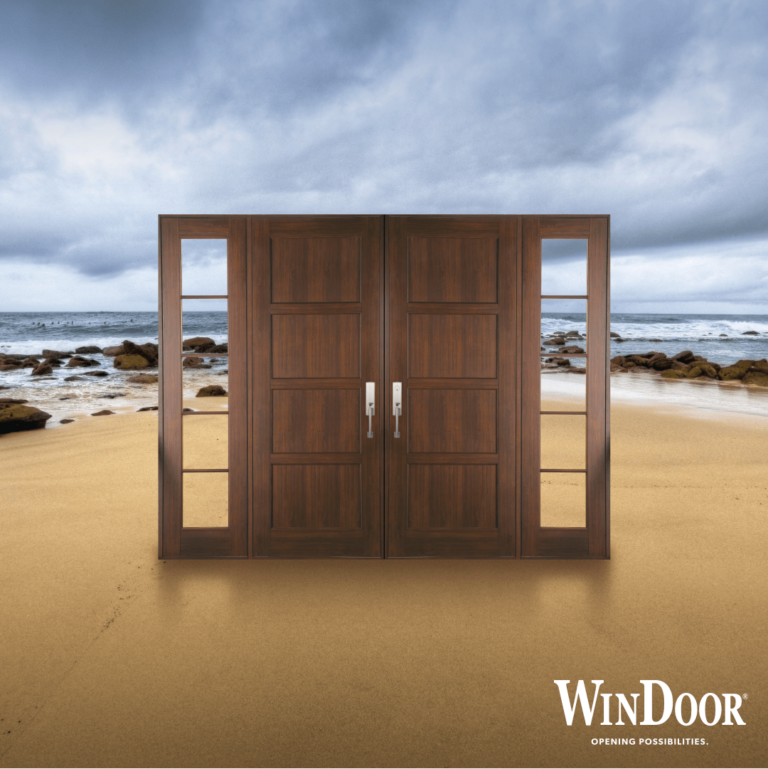Windows come in all different styles, including awning, casement, single hung, and more. Shopping for the right window style can be a challenge. With so many good options, many homeowners feel overwhelmed by their task. The awning window is a style that goes overlooked by many homeowners. This modest but highly functional window style is similar to casement window styles, but with a twist: the hinges are on the top.
This relatively unusual type of window can be found in homes built in contemporary architectural styles as well as homes built in more classic styles. Often, awning windows are paired with other window styles, such as picture windows. Understanding the benefits of this window type can help you choose when to use this window in your home.
WHAT IS AN AWNING WINDOW?
An awning window is a window that operates on hinges positioned at the top of the window. To open, turn the crank on the window’s interior side. Awning windows get their name from window awnings that provide shade on buildings and homes. While awning windows provide no shelter from sun, they do provide shelter from rain.
DIFFERENCE BETWEEN AN AWNING WINDOW AND A CASEMENT WINDOW
Awning windows and casement windows operate very similarly, so for some homeowners, it may be hard to tell these windows apart. Both types of windows operate with a turn crank. Both have hinges that allow them to open and close.
However, awnings windows are designed with hinges on top, so they can open from the bottom. Casement windows, on the other hand, have hinges on one side, and they open from the opposite side.
Benefits of an Awning Window
Awning windows have many benefits. Knowing these benefits before you install new windows can help you decide if these are the right window type for you.
- Ventilation. Awning windows can open fully, because they operate on hinges. Compared to single hung windows, which have a non venting sash, awning windows can let in more fresh air into your home.
- Aesthetics. Awning windows have a distinctive appearance that looks attractive on many homes in varying architectural styles.
- Flexible application. These windows can be installed as standalone windows, or they can be combined with picture windows for an additional view outside.
- Block the rain. Because awning windows open up, they block rain from entering your home. They’re the perfect window to open in a rainstorm.
- Ease of use. Awning windows come with an easy turn crank that allows them to be opened and closed without applying much force. Compared to windows that must be lifted in order to be opened, awning windows are relatively easy to use.
- Security. Awning windows can only be opened with the turn crank inside the house. This makes these windows extra secure for homeowners seeking protection against intruders.
- Energy efficiency. When closed, awning windows form a tight seal against outside elements. They can also be made from energy efficient glass, to reduce the transfer of energy from outside to inside, and vice-versa.
WHICH IS BETTER: AWNING WINDOW OR SINGLE HUNG?
Single hung windows are among the most popular window types available. With a classic appearance and easy to configure style, single hung windows offer a range of benefits. There are many ways that single hung windows differ from awning style windows. Here’s what you need to know.
Ventilation
Compared to awning windows, single hung windows offer less ventilation, because they consist of one moveable sash and one non-vented sash. In other words, single hung windows are always “half closed.”
Functionality
Single hung windows can also be more difficult to open and shut, because they must be lifted to be opened, and pulled down to be closed. Awning windows are opened and closed with a turn crank, so they’re much easier to operate.
As a homeowner, you may be a good candidate for a single hung window if you’re looking for a window that offers expansive views with a traditional style. If you’re seeking a window that offers improved ventilation and an easy opening and closing mechanism, an awning window may be best for you.
WHERE TO INSTALL AN AWNING WINDOW
Awning windows are often installed paired with picture windows, so anywhere in your home where a picture window is installed is a good place for an awning window.
These windows are sometimes placed up high to capture winds and allow more ventilation into the room. Awning windows can commonly be found in living rooms, bedrooms and in kitchens, to help ventilate cooking odors and smoke etc.
CHARACTERISTICS OF A GOOD AWNING WINDOW
When you’re looking for an awning window, this is what you should look for:
- Beauty. Choose a window with an attractive frame, in a color that coordinates well with the other colors in your home.
- Energy efficiency. Low-e glass deflects heat and prevents your home from losing energy throughout the day. Seek windows that are made with low-e glass, and a well-insulated framing material like vinyl.
- Easy functionality. Take some time to try the crank on a sample window you’re considering for your home. The crank should work easily, as should the locking mechanism. If it doesn’t, then keep looking for a window that works for you.
HOW TO SHOP FOR AN AWNING WINDOW
Shopping for an awning window is a lot like shopping for any other fixtures or home upgrade. Start by doing your research. Find a window manufacturer and dealer you can trust. Check references or get referrals, read testimonials and contact the window dealer to find out how their customer service measures up. Consider several different window dealers before making your final selection.
Establish a budget to avoid paying more than you can afford. Once you know how much you can afford to pay, get quotes from the window dealers who seem to offer the best customer service and who sell the best quality products.
Some homeowners naturally gravitate toward the windows that cost the least, but these windows may not be the best windows for your home. Consider all options that fall in your price range. Ultimately, it’s more important to buy the best windows you can, rather than the windows that cost the last.

